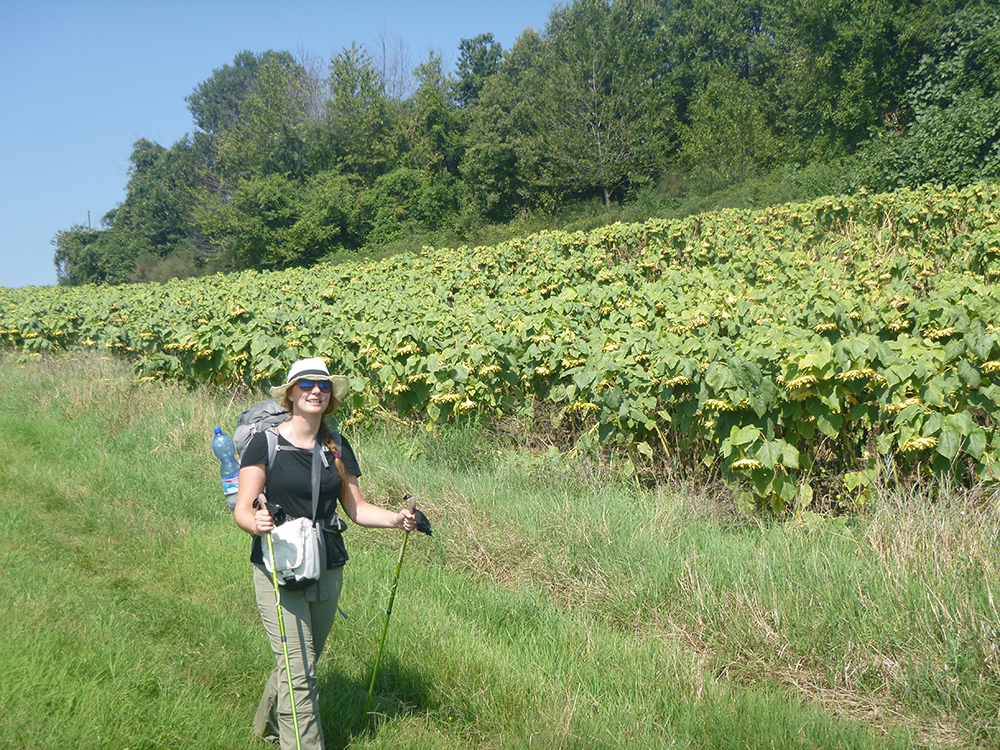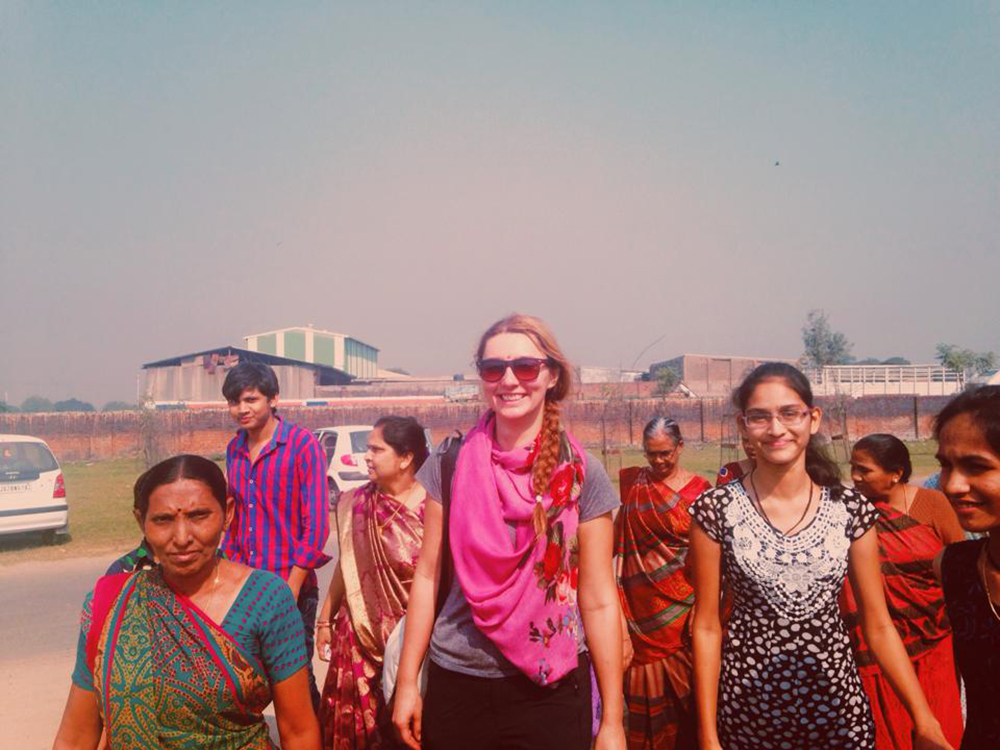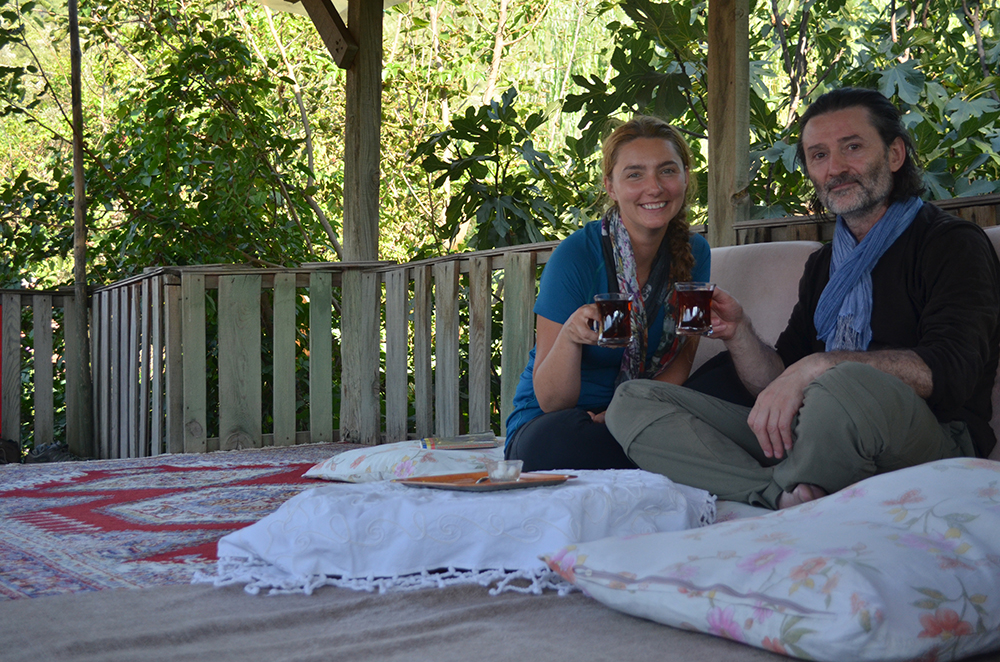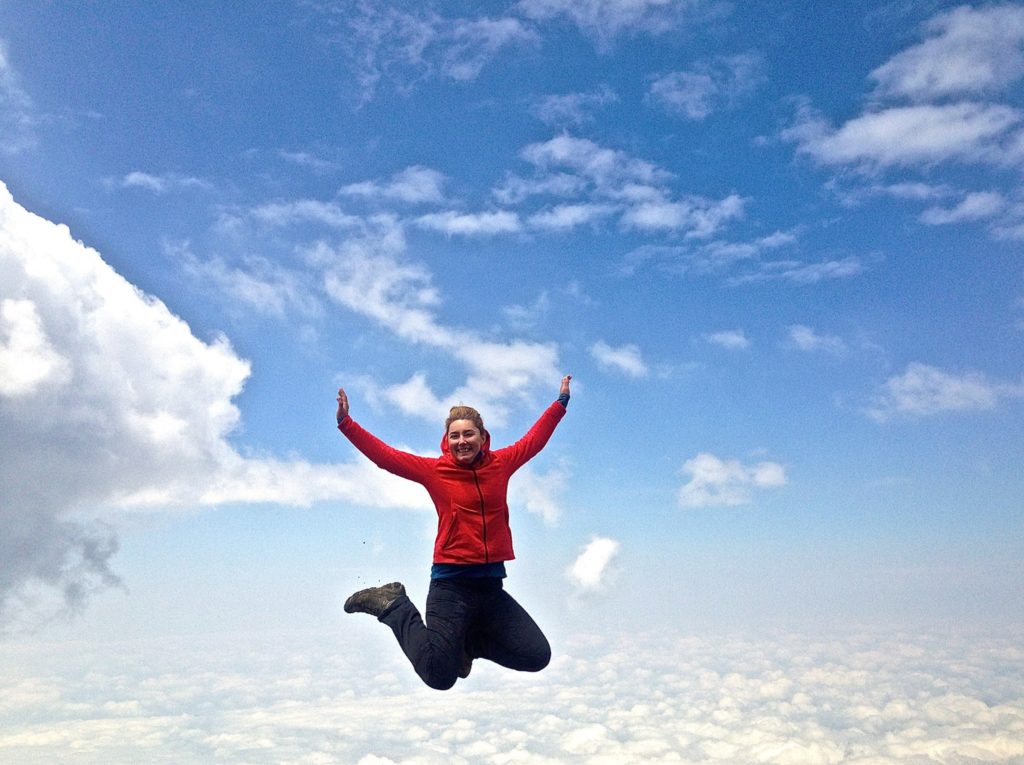How to Plan & Undertake A Pilgrimage (Or 10) With An Unlikely Pilgrim
This is part of my unconventional interview series, designed to demonstrate the wildly varied ways we can live, work, and chase our dreams. Please keep in mind that, since these are interviews, the opinions, methods, and websites contained within do not necessarily reflect my own views or experiences. (Which is, in my opinion, part of what makes them wonderful.)
Tell us about you and the adventure you’re on.
I am Russian-born New Yorker who (to her own bewilderment) left everything behind to walk 5,000 kilometers of pilgrimage trails around the world.
What made you decide to travel? What inspired your journey? And why on foot?
I walked the Camino de Santiago three years ago. I fell into it by accident (as many people do), all the pieces sort of fit—a payment for a book project came through, work allowed for an extended vacation and before I knew it I was on a plane to France. I fell in love with the Camino the second I set foot on it. I discovered that I was capable of reveling in life at a level I had never known before. I was giddy. I couldn’t wait to wake up every morning and start walking, I talked to everyone like they were my best friend and just discovered this whole other part of myself that was joyous.
On the Camino, everything moved exceptionally slow; I remember more of my day, told my secrets to more people in one month than I did in a year in New York, smelled more roses, and felt my body with every step. You end up cramming what feels like a lifetime into one day. By the end I couldn’t stand the thought of going back to a regular life. I was convinced that I could keep this high going all the time (not unlike an addict) so I started dreaming up other pilgrimage trails that I could do.
Having now been walking pilgrimages for almost a year, I have discovered that being a pilgrim means I am viewed differently by the people whose country I’m walking in.
Typically these pilgrimages are well-known and the people who walk them are respected as well, as they often do it on behalf of those who can’t afford to or just don’t have the health or the time for such a journey. As a pilgrim, you carry with you the prayers of everyone you meet and that is a completely unique way to interact with local people. You’re no longer a tourist or even a traveler; you’re now a spiritual conduit.

What did you do to prepare for your pilgrimages? What do you wish you’d done to prepare?
Physically, I did absolutely nothing. I’d given up my gym membership so I could save that money. I did a lot of research into the kinds of trails that exist around the world that fit with the kind of emotional and physical journey I wanted to go on. Apart from the trail in India, where I worked with a tour company to create this route and be their guinea pig for it, I really didn’t prepare much. I just showed up to the starting point and found a guide book or some kind, miraculous person who helped me get going. I really wish I had spent more time reading the histories of the pilgrimages and any anecdotes, beyond the sort of standard encyclopedia entry stuff. I also wish I’d read more stories from other pilgrims that could bring the paths to life.
How do you fund your pilgrimages?
I have a freelance job I’ve managed to (mostly) continue doing while traveling, I had some money saved up and I will be in debt to Capital One for the rest of my life, I think. There are definitely smarter ways to fund a year-long trip, but in order to do it now, when I really needed to, I had to make some unsound financial decisions and I don’t regret them. Yet.

Do you walk alone? If not, how do you find your walking buddies? If so, what do you think of being on your own so often?
It’s really been a mix. I walked with a friend and a guide in India, with my cousin in Switzerland, and completely alone in Japan. It’s important to experience both being on your own and being with someone you like enough to spend twenty-four hours a day with. I think I really needed to be alone in Japan because I have a tendency to lean on other people for emotional support rather than just breathing through the discomfort and heartbreak that are inevitable if you’re a member of the human species. I was going through an especially rough time in the two months I was walking the Shikoku pilgrimage and though there were days when I was on my hands and knees in the woods crying, I have a new tolerance for pain and an appreciation for my own ability to cope. It’s special and it makes me more likely to be courageous, as I now feel like I can handle whatever comes next.
As for making friends along the way, it’s fairly easy to approach other pilgrims—you’re eating, living and sleeping in the same places so there are plenty of opportunities to start a conversation, usually about the state of your feet.
What’s the biggest challenge of distance walking?
I think getting over the emotional hurdles we all place in front of ourselves. It’s easy to think yourself a lot less capable than you really are when there is no one else there to push you and tell you otherwise, so it becomes more comfortable to slack, take more rest days, take less scenic routes that aren’t as challenging, or make what should be a beautiful day highly unpleasant for yourself just by convincing yourself that it is going to be hard.
It’s also easy to forget that it’s not just about getting from point A to point B. Sometimes I ignored some marvelous museum or quirky landmark just because it was a half an hour out of the way. It’s important to remember to live really richly even when you’re walking.

What has been the greatest joy?
The exquisite sense of freedom. There is the freedom that comes with long-term travel of any kind, like lack of a strict schedule, family obligations, a job to get up for…but then there are some small liberations that I’ve only experienced while walking, like just not giving a shit about what you look like. When you’re carrying everything on your back for twelve months, there’s no room for makeup, pretty shoes, or pencil skirts. All of a sudden there is all this head space freed up that used to be taken up by getting ready, the inevitable self-hate that comes with taking off your makeup at night, deciding what jewelry to wear. Also, since you’re moving all the time, apart from other sloppy, dusty pilgrims you’re not going to see any one person more than once and that means you can nap on the side of the road and not care what anyone thinks of you. True story.
How has the experience changed your life?
There are the external changes, like I have chosen to move to Istanbul after falling in love with Turkey while walking the St. Paul’s trail there. I’ve also decided to make it my life mission to walk in every country around the world.
The more important changes have happened internally and I think they are subtle, but over time they will have a huge impact on the direction of my life. I’ve become much more patient and flexible. My ability to think critically and to analyze the information I receive has become much stronger. I’ve started questioning my own preconceptions about the world and the information I’ve received over the course of my life about what success looks like, how effective charity is, the role of art and television in our societies, and whether or not silverware is essential. I, for one, am naturally inclined to eat with my hands.

Any tips for people thinking about taking off on foot?
Yes, GO! It will enrich your life in so many ways. Even if you don’t become a pathological pilgrim, you will see yourself in a completely new and unexpected light. Other than that, break in your shoes ahead of time, be prepared for blisters, pack light, and be gentle with yourself. Everything is manageable if you take it one slow step at a time.
Any favorite pilgrimages? What would you recommend for first-timers? What’s your favorite off-the-beaten-path walk?
I owe everything to the Camino de Santiago in Spain. I just walked it for the second time as my last pilgrimage of the year. It is perfect for beginners because it is well marked and safe, and everyone along the path knows who you are and why you are there, so they will always point you in the right direction and offer a word of encouragement or a recommendation for your broken feet. It’s also incredibly diverse in its landscape and has 1,000 years of history and all the infrastructure to make the journey as smooth as possible.
St. Paul’s Trail in southern Turkey was definitely off the beaten path and as stunning as it was challenging. I walked it with my dad and in the three weeks we were there we did not meet a single other pilgrim, though we did make plenty of friends with villagers, fishermen, and farmers. It was incredibly special and intimate and with the coolest accommodations! We stayed at a fish farm, on the rooftop of a village shop, in a tree house, and in the home of an elderly couple who spoke not one word of English but made us dinner and breakfast and a packed lunch to take with us the following day.

What was your least favorite walk or stretch of pilgrimage so far?
India was very hard, but I can’t say that it was least favorite because I really learned a lot about myself and was forced to reexamine a lot of my own deep rooted prejudices and misconceptions about what poverty looks like, my own greed, my fears and my anger, and all kinds of other emotions that I thought I had under control. I walked with my dear friend Torre and our friendship was tested as well as we both struggled to handle the unapologetic reality of India, but luckily even after 10 days of dysentery and a possible snake bite in a hotel room in Mumbai, we are still thicker than thieves.
How do you choose your walks? What tools do you use to plan?
I wanted a lot of diversity in my walks. Most of the pilgrimages that are longer than a couple of days seem to be Christian, at least the more accessible ones. Not being religious, I really had no desire to just pay homage to one spiritual and cultural way of thinking so I found Gandhi’s India, Buddhist Shikoku, and Polynesian Hawaii. Most of the time, I just listened to my heart. What made me really excited? What route couldn’t I stop thinking about or imagining? Only then did I bother with logistics—how long would it take to finish, what season could I do it in, how safe was it? Really, I’m a terrible resource for how to travel the “right” way, as I wing it most of the time, but I am a great example of how doing it any imperfect way can and will still get you there.

What’s next for you and where can people find out more about your journeys?
I am making a move to Turkey in the fall and after I settle in, I’ll be back walking in 2016. For now, I have plans to walk the length of Jordan, north to south, and another trail in the east of Ireland. You’ll find my lengthier tales at unlikelypilgrim.com and I have been using the An Unlikely Pilgrim Facebook page as a microblog as well. See you there soon!
So, your turn: who’s thinking about doing a pilgrimage? Which one and what inspires you about it?
Did this post help you? Share the love by:
:: Buying a copy of my Italy, France, Switzerland, Paris, Barcelona, or Prague guides (already have one? Gift another to a friend!)
:: Clicking here before you make your next Amazon order (it doesn’t matter what you order, if you start by clicking from my site, I’ll get a commission!)
Comments
-
-
Neens Bea
What an inspiring interview! I’ve always been fascinated by pilgrim paths and have always wanted to do walk the one to Trondheim back home in Norway. Hopefully the opportunity will knock some time soon!
-
Kristine
I love this post so very much! The Camino has been calling me for quite some time, and I’m hoping to walk it next fall. I’m fascinated my the pilgrimages you’ve done- having spent time in India I can only imagine how equally hard and rewarding and long walk there would be. Well done!!!

Lynne
What a great post! I have been wanting to find some pilgrimages to walk over the next few years. While I’d love to do the Camino, I would like to find something shorter to start with. I’ll be sure to check out Masha’s website. But I find her story very inspiring and love that she wants to walk in every country!! A noble goal!!